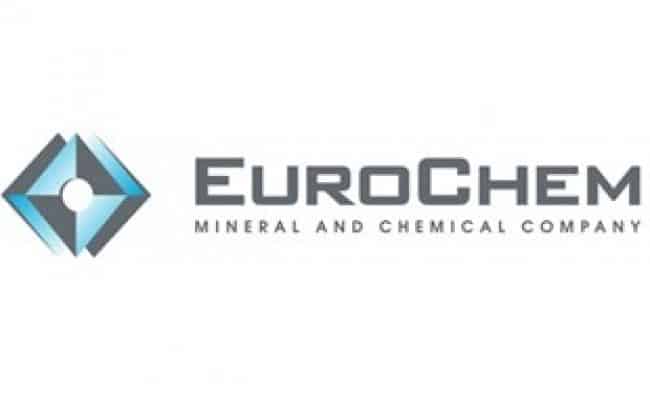EuroChem Group AG, the nitrogen and phosphate fertilizer company headquartered in Zug, Switzerland, has reported consolidated annual sales of US$6.2 billion for 2019, 11% higher than a year ago, as a result of a 7% increase in sales volumes and a more favorable price environment in the first six months. The full-year performance took EuroChem Group EBITDA to US$1.55 billion, 2% above the level achieved in 2018. EBITDA growth was driven primarily by sales improvements and the positive effects of foreign exchange rates for ruble-denominated costs, though slightly below expectations due to a pricing dip in the second half of the year. Notwithstanding the challenging environment in 2019, EBITDA margin was only 2 percentage points down, year-on-year.
“We have delivered strong full-year results despite the subdued pricing in global fertilizer markets,” said Petter Østbø, EuroChem Group’s CEO, and added that “the beauty of our business model is that it can deliver strong results at almost any point of the commodity industry cycle and that is clearly shown here. 2019 was a busy year with a number of major milestones, including the opening of our ammonia plant at Kingisepp, the launch of our updated business strategy, and the continued development and expansion of our distribution platform and new logistics infrastructure. We face the future with great confidence.”
2019 proved challenging for the fertilizers sector due to difficult weather conditions that impacted the application season and led to stocks increase for various products in China, India and Brazil. A low pricing environment for natural gas and sulphur combined with supply-side pressures to add to pricing tensions. In 2019, ammonia FOB Yuzhny prices softened by 18% in 2019. The announcement of facility closures by other companies at the end of 2018 did little to support prices. Modest prices for natural gas in Western Europe and heavy rains in the US also negatively impacted the ammonia market. Global urea prices, meanwhile, were more stable in 2019 despite a subdued demand across key markets, new capacity additions and a lackluster application season in the Americas and Europe.
The phosphates market was under pressure from anticipated new capacity ramp-up and tougher competition from marginal Chinese producers on the back of cheaper raw materials. Together with low import demand in the US, Latin America and Asia, and the traditional end of year buying lull, phosphate prices fell to 12-year lows. Year-on-year prices dropped by 18%. Potash prices, on the other hand, were reasonably stable during the year and posted a 3% rise compared to 2018. A healthy supply-demand balance in the first half of the year leaned toward oversupply in the second half, due to stock build-ups in China, which was partly offset by production curtailments in 4Q19 by several major potash producers, as well as the concluded Indian contract.




